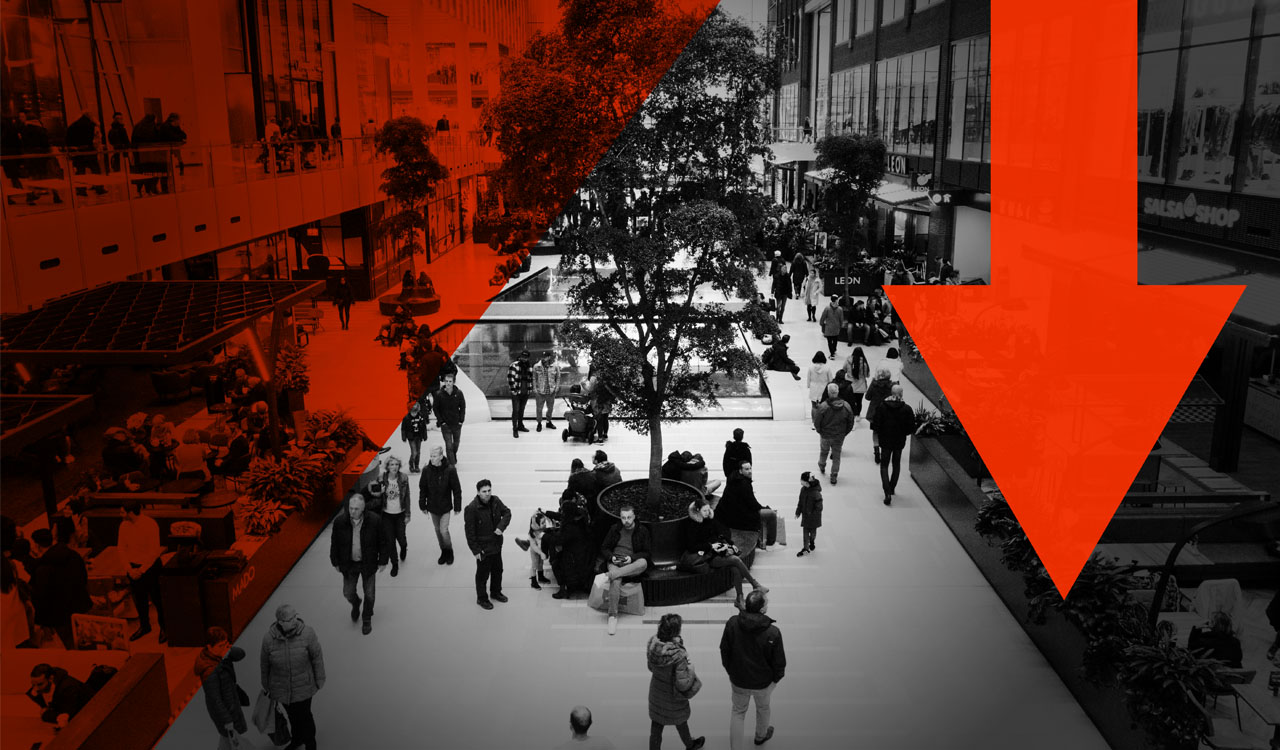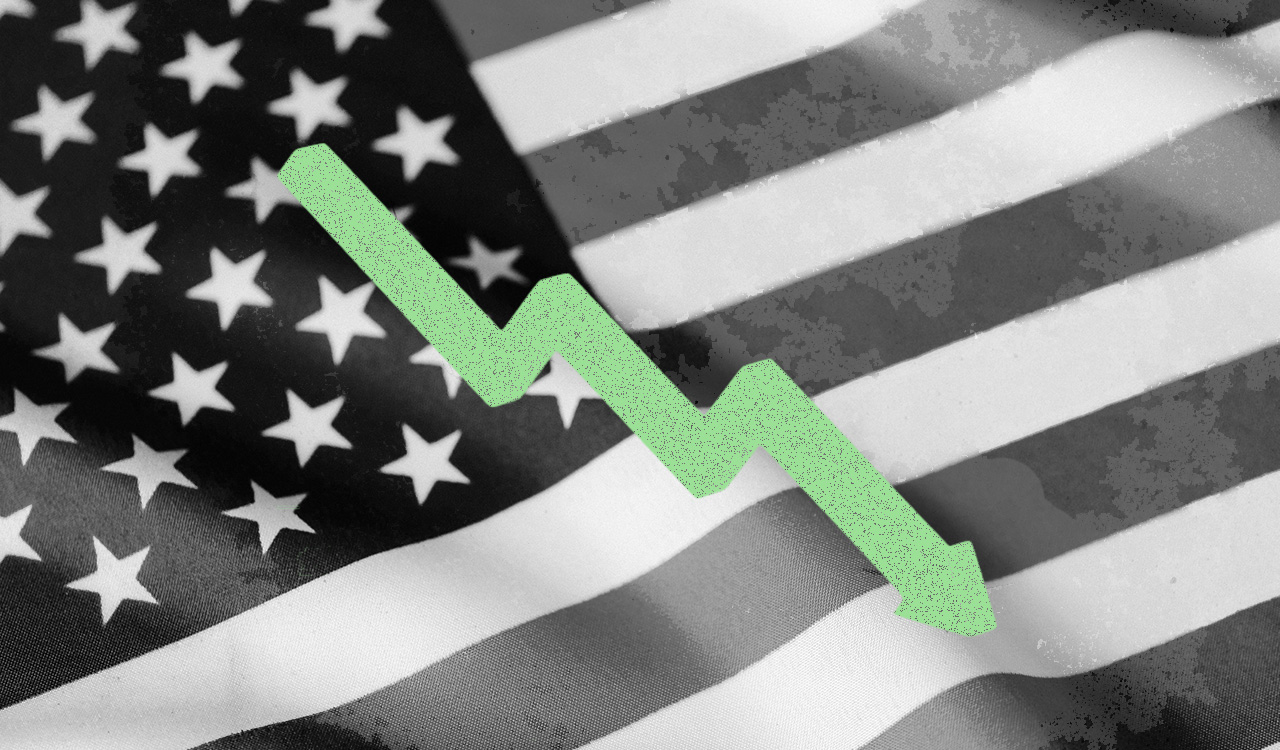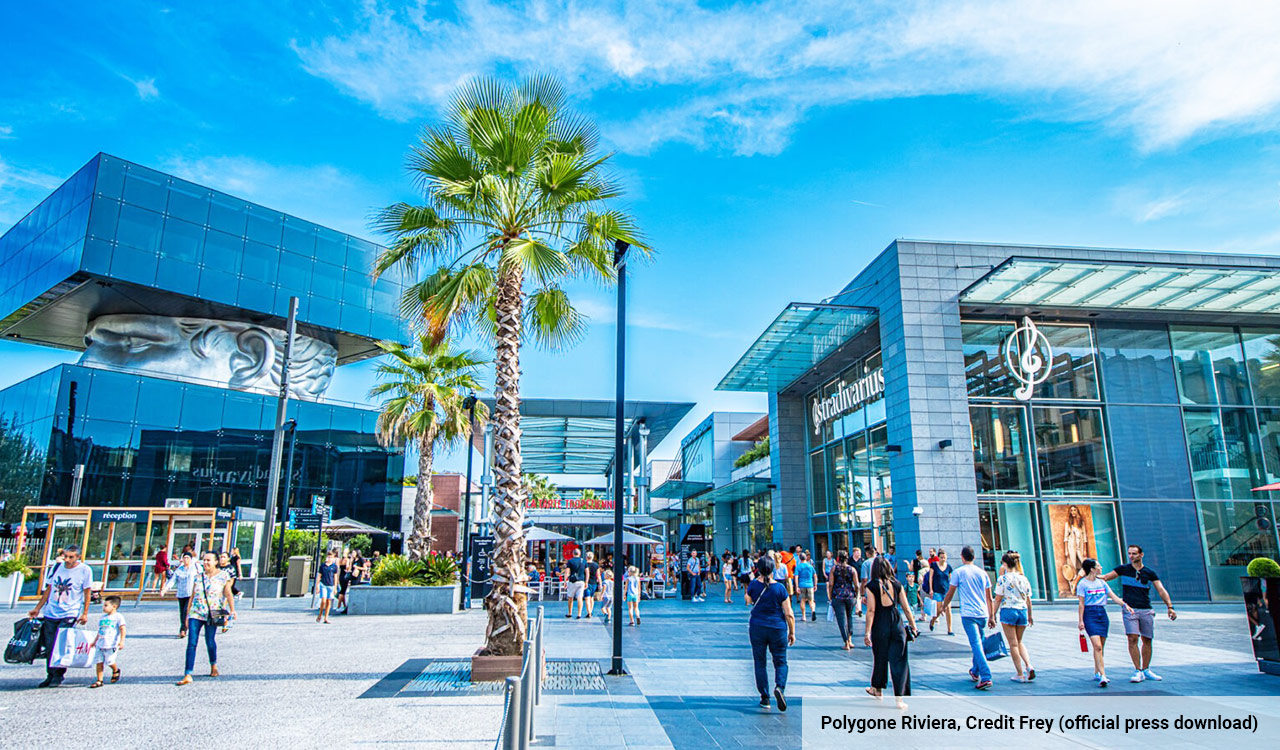For some 300 years, people have relied upon low-tech barometers to predict weather changes measured by the air pressure. When air pressure is high, it signals clear skies and fair weather. When it’s low, storms are in the forecast, and when it drops really low, a hurricane is coming.
Americans are now under $1 trillion in credit card debt after relying on their cards to pay for basic month-to-month purchases. Now the average credit card balance is about $6,000 and more than half of credit card holders worry they can’t pay off their debt.
Economic Bellwethers
Unfortunately, many of us don’t pay attention to the many economic barometers we have in place that predict our future. For example, some wait until after the fact to learn that our economy is taking a nose-dive following two consecutive quarters of negative GDP. And they don’t even prepare for the metaphorical economic hurricane about to hit us.
The emerging signs of an economic maelstrom are forming that could be as bad or worse than the 2007-2009 Great Recession – if anyone is willing to notice. In May, Nationwide released its
2023 Economic Impact report based on a survey among n=2,000 adults and found over two-thirds of Americans (68 percent) expect a recession to hit within the next six months.
Among those who see a recession imminent, nearly 80 percent expect it to be “severe,” with 33 percent expecting it to be as bad and 29 percent expecting it to be worse as the last one. Overall, 57 percent are adjusting their finances to get ready for it to hit.
Retail: Half-Full vs. Half-Empty
Full disclosure: I’ve been on the glass-half-empty side of the economic debate for some time. It was plain to me that the seven percent growth retail enjoyed last year was primarily attributable to inflation since the retail data reported by the Census Bureau is in current dollars, not constant dollars adjusted for inflation.
Nonetheless, the National Retail Federation remained in the glass-half-full camp despite holiday 2022 retail spending falling short (5.3 percent) of its
holiday forecast between six to eight percent. Then in March, it released its sunny forecast for 2023, predicting retail would advance between four and six percent year-over-year. ”While we expect growth to moderate in the year ahead, it will remain positive as retail sales stabilize to more historical levels, “ stated NRF president and CEO Matthew Shay.
NRF remained positive through July, even teasing that it saw signs of happy days ahead. “The year is half over and the economy is still moving in the right direction. While its rhythm, tone and pattern have slowed, it has not stalled, and recently revised data shows underlying strength that seems to be rolling forward,” reported NRF chief economist Jack Kleinenz in the
July Monthly Economic Review.
About Face
Then in early August, the economic ball abruptly rolled back when NRF announced: “
Consumer spending is slowing. There are ongoing economic challenges and questions, and the pace of consumer spending growth is becoming incrementally slower,” Kleinheiz reported, adding, “The current framework clearly increases the chance of a slower economy,” in reference to the Federal Reserve’s actions to control inflation.
Only days after this announcement, the Census Bureau released its
advanced monthly sales report for July, showing that retail sales through the first seven months of the year advanced only 1.1 percent year-over-year, excluding motor vehicles, gasoline stations and restaurants. At the same time,
inflation was running at 3.2 percent. You do the math.
Despite reassurances that consumers are “still spending,” Kleinhenz said they have been “adjusting how much they buy.” He also remarked that consumers’ “stockpile of savings accumulated during the pandemic is dwindling,” curtailing their spending power.
Adding insult to injury, Americans are now under $1 trillion in credit card debt after relying on their cards to pay for basic month-to-month purchases. Now the
average credit card balance is about $6,000 and more than half of credit card holders worry they can’t
pay off their debt.
Rising interest rates are discouraging consumers from continuing to turn to their plastic. On a seasonally adjusted basis at annual rates, the
Bureau of Economic Analysis revealed that personal nonmortgage interest payments are 48 percent higher in the second quarter of 2023 compared to the same quarter last year, or $462.6 billion now vs. $313.1 billion then.
Conversely, Americans are squirreling away as much as they can in savings, with the second quarter savings rate as a percentage of disposable income up to 4.4 percent this second quarter from 3.2 percent last year. They know which way the wind is blowing and are hunkering down for what’s ahead.
Another Shoe Drops
Many retailers are already experiencing consumers pulling back. In its most recent reporting, Macy’s saw an 8 percent decline in net sales over last year, and VF revenues dropped 8 percent, with Vans and Dickies off 22 percent and 20 percent respectively. Kohl’s experienced a 4.8 percent decrease and comparable sales were down 5 percent.
Home Depot was off 2 percent and did better than Lowe’s, down 8.9 percent. Williams-Sonoma revenues dropped 11.9 percent year-over-year. Gap Inc. declined 8 percent, with Gap brand dropping 14 percent and Banana Republic down 11 percent. Levi’s revenues fell 9 percent overall but tanked 22 percent in the Americas.
Even the luxury sector isn’t immune. Nordstrom revenues, including Nordstrom Rack, dropped 8 percent with its flagship Nordstrom down 10 percent. Capri Holdings, parent of Michael Kors, Versace, and Jimmy Choo and soon to be acquired by Tapestry, came off its most recent quarter with revenues down 9.6 percent.
Ralph Lauren global was basically flat in the latest quarter, but sales in North America dropped 10 percent. And the international luxury leaders, LVMH, Kering, Richemont, Prada and Burberry, most recently reported revenues in the Americas flagged too.
Our own Warren Shoulberg offers a simple guide to determine which way the economic winds are blowing: the Wal/Get Gauge. “When Walmart is doing well, the economy is in trouble and things are not so great. When Target is doing well, the economy is improving and things are looking pretty good,” he explains. In their most recent reporting, Walmart revenues rose 5.7 percent and Target’s comparable sales were down 5.4 percent.
Back-To-School Indicators
The trend in back-to-school shopping typically provides a bellwether of what’s ahead for holiday retail. In July, the NRF proclaimed that
back-to-school shopping would be one for the record books, reaching $41.5 billion from $26 billion in pre-pandemic 2019 and rising from $697 per household to $890 this year, not adjusted for inflation.
But then the basket of typical school supplies will cost 28 percent more for American families this year than last, according to a global study by
World Remit. So that accounts for all of NRF’s expected rise in spending.
Deloitte takes a dimmer view, based on a survey of 1,200 Americans with children aged 5 to 18 years. Calling this a year for economizing, it expects a 10 percent cut in spending per student, with parents leaning into essential school supplies, with year-over-year spending up 20 percent, but cut back on both clothing and accessories, down 14 percent, and tech products, down 13 percent. About half of parents who will spend less cite reduced disposable income as impacting their BTS plans.
Back-to-school shoppers are stressed by financial fatigue, Deloitte reports. “The entire shopping journey is about minimizing costs this year. Parents are shopping earlier and they’re choosing to pay with cash.”
Nearly one-third of parents said their household is in a worse financial situation than last year, with lower-income households (45 percent) feeling the greatest pinch. Across the board, 51 percent expect the economy to weaken over the next six months, a view shared by 46 percent of higher-income households.
In assessing the BTS shopping season and what it could mean for holiday, Nikki Baird, vice president of strategy at Aptos said, “This back-to-school season is shaping up to be one where consumers overall spend more but end up buying less. And that could easily lead to a similar impact on holiday spending.”
End of the Line
Ever since pandemic restrictions eased, consumers have answered retailers’ rallying cry to keep shopping, and they didn’t miss a beat early on even after inflation set in, thanks to the government’s Covid relief payouts. But they are rapidly reaching the end of the credit and savings rope, and retailers should prepare for a sharp pullback in spending.
Earlier this year,
S&P Global Marketing Intelligence predicted retail sales would grow only 0.5 percent in 2023 or a 0.1 percent decline after accounting for inflation. That forecast was delayed by a surprisingly strong first half of the year, with NRF reporting 4 percent growth, excluding automobile dealers, gasoline stations and restaurants. But their retail spending slowed to 1.6 percent in the second quarter, and a weak second half of 2023 is almost assured.
“Persistently high inflation and weakening consumer demand are eating into U.S. retail sales expectations this year,” S&P reported. “This year’s retail sales will help determine whether the U.S. enters a recession as consumer spending accounts for nearly 70 percent of U.S. GDP.”
And Phil Orlando, chief equity strategist at Federated Hermes added, “If the consumer is pulling in their horns, then to a significant degree that is going to contribute to slower economic growth and maybe recessionary growth.”
End Notes
The good news – if there’s any to be had – is that retailers have a playbook for handling recessions, unlike the pandemic that nobody saw coming. And the pandemic had an unexpected upside. It forced retailers to flex slackened corporate muscle and develop new skills, like building more resilient supply chains and getting closer to local store operations. And on the human side, with many retailers already running short-staffed, they won’t have to implement major layoffs that undermine the spirit and loyalty of the survivors.
Retailers are resilient; they have to be. They’ll need that skill to manage through the next hit to the system: the coming recession.




